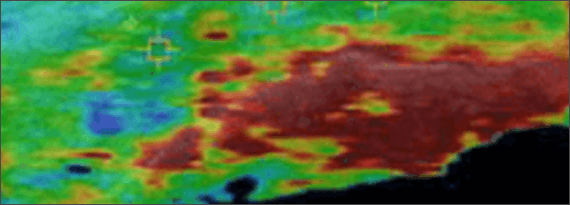Sonoelastography is a game-changer in the diagnosis and rehabilitation of injured and damaged tissues. Manual palpation has long been a traditional component of the diagnostic process, but sonoelastography is more precise by far than the hands of the most skillful therapist. It is essentially palpation on steroids, giving us quantitative data to evaluate damaged tissues.
Inflammation, calcification, trigger points and architectural damage can diminish tissue elasticity. High resolution ultrasound alone does not give us 100 percent accuracy. Sonoelastography tips the scales, providing an additional 15-20 degrees of certainty. It enables us to visualize and measure the elasticity of tissues throughout the rehabilitation process.
Using sonoelastography in conjunction with high resolution ultrasound, we are able to see beyond grey scale to:
- More accurately visualize myofascial trigger points
- Visualize thickening or fibrosis of the fascia
- Monitor pre- and post-treatment elasticity for physical therapy, dry needling, injection procedures, shockwave therapy and more




























































